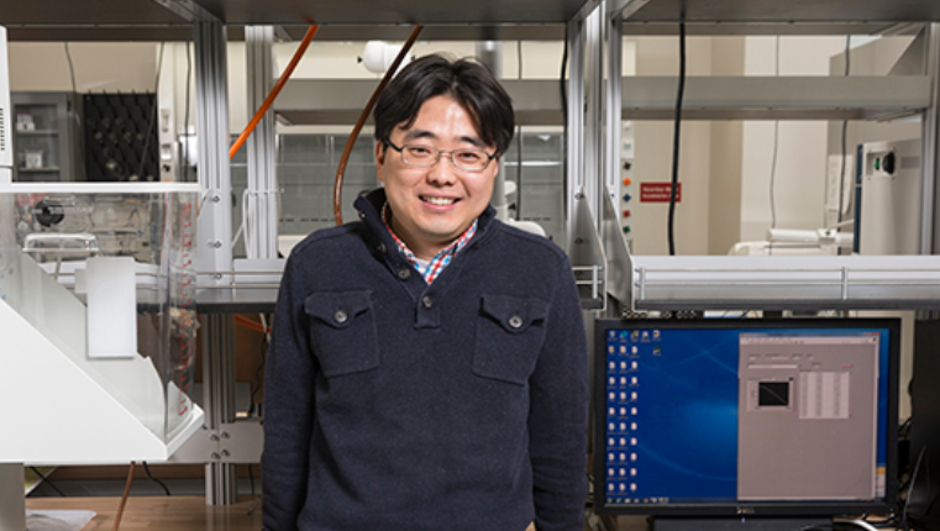
Used in health diagnostics, therapeutics and monitoring, electronics skin (e-skin), is a stretchable and self-healing form of electronics that mimics the functionalities of human skin.
Seokheun Choi, associate professor of electrical and computer engineering, and Ahyeon Koh, assistant professor of biomedical engineering, will attempt to generate a practical and longstanding power source for e-skin from human sweat by using the metabolisms of sweat-eating bacteria.
“Among many energy-harvesting devices for e-skins, biochemical energy harvesting from human sweat is arguably the most underdeveloped because of immature technologies,” said Choi. “Nonetheless, excitement is building for scavenging power from sweat, as it is the most suitable energy source for skin-contacting devices. Sweat is readily and constantly available in sufficient quantities, can be acquired non-invasively, and contains a rich variety of chemical and biological entities that can produce electricity.”
E-skins have recently emerged as a novel platform for electronics, taking on more important roles in healthcare. Stand-alone and self-sustained e-skins could provide reliable, effective and sometimes life-saving functions, and Choi said these devices are the future of technology.
“Electronic skins or ‘e-skins’ have now reached the ‘tipping point’,” said Choi. “With the development of stretchable, biocompatible and self-healing electronic materials, significant research efforts are dedicated to the seamless and intimate integration of electronics with human skin, which will produce breakthroughs in human-machine interfaces, health monitoring, transdermal drug delivery and soft robotics. As the emerging technologies of artificial intelligence and the internet of things are advancing at a rapid pace, e-skins will definitely be one of the ultimate forms of next-generation electronics.”
A realistic and accessible power source is needed for a next-generation of smart, stand-alone, always-on e-skin systems. This will be challenging because human skin integrated with e-skins is an extremely harsh environment for power generation, as skin is cool, dry, acidic and lacks potential energy sources. The researchers believe that using the metabolisms of sweat-eating bacteria, including human skin microorganisms or ammonia-oxidising microorganisms, will create a power source for new e-skins.
“The proposed sweat-powered batteries will be based on microbial fuel cells, which will exploit sweat-eating bacteria to transform the chemical energy of sweat into electrical power through bacterial metabolism,” said Choi.
While sweat-generated batteries are intended to power e-skins, Choi said this project has the potential to impact more than just the e-skin market.
“The project outcomes will address grand challenges in sensing and power sectors critical to US security and competitiveness, through enabling skin-mountable electronics that will augment human capabilities, and well-being by providing a tool that can improve many healthcare devices,” said Choi. “Therefore, the proposed research has potentially far-reaching social and economic effects linked to health monitors, human-machine interfaces, soft robotics, medical therapies and disease diagnostics.”
The project - Power-on-Skin: Energy Generation from Sweat-Eating Bacteria for Self-Powered Electronic Skins - has received $452,000 grant funding from the US National Science Foundation.





Swiss geoengineering start-up targets methane removal
No mention whatsoever about the effect of increased methane levels/iron chloride in the ocean on the pH and chemical properties of the ocean - are we...